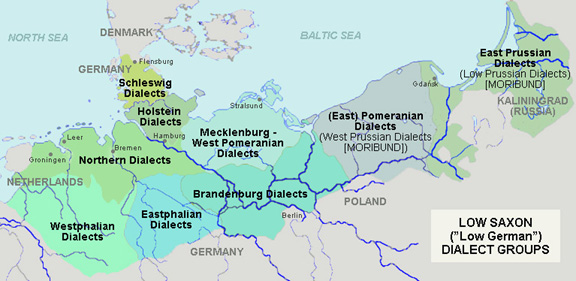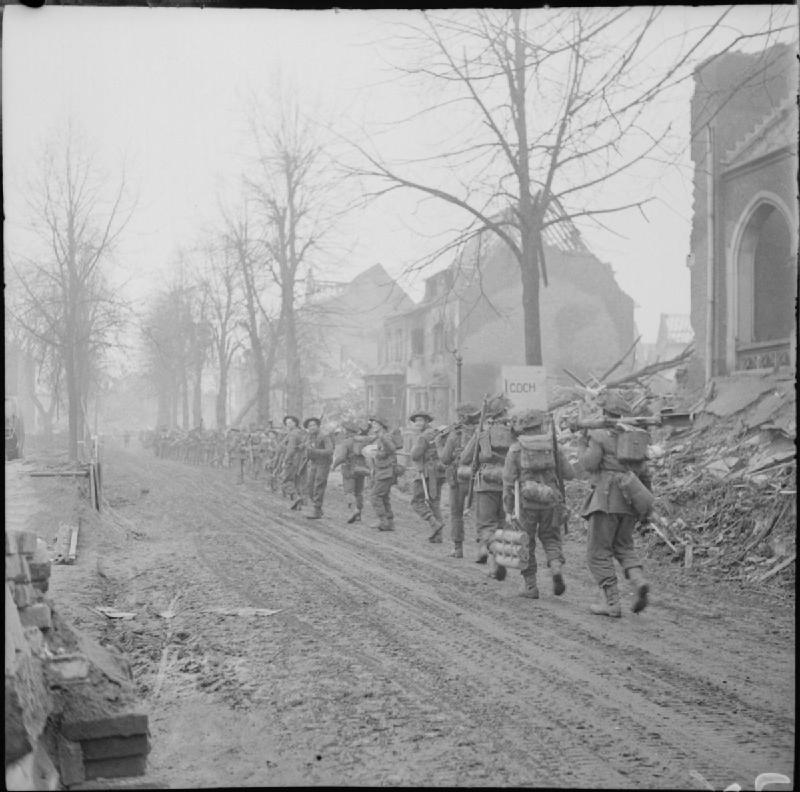|
Meuse-Rhenish
In linguistics, Meuse-Rhenish () is a term with several meanings, used both in literary criticism and dialectology. As a dialectological term, it was introduced by the German linguist Arend Mihm in 1992 to denote a group of Low Franconian dialects spoken in the greater Meuse-Rhine area, which stretches in the northern triangle roughly between the rivers Meuse (in Belgium and the Netherlands) and Rhine (in Germany). It is subdivided into North Meuse-Rhenish and South Meuse-Rhenish dialects ().Michael Elmentaler, Anja Voeste, ''Areale Variation im Deutschen historisch: Mittelalter und Frühe Neuzeit'', with the subchapter ''Rheinmaasländisch (Niederfränkisch)''. In: ''Sprache und Raum: Ein internationales Handbuch der Sprachvariation. Band 4: Deutsch. Herausgegeben von Joachim Herrgen, Jürgen Erich Schmidt. Unter Mitarbeit von Hanna Fischer und Birgitte Ganswindt.'' Volume 30.4 of ''Handbücher zur Sprach- und Kommunikationswissenschaft (Handbooks of Linguistics and Communica ... [...More Info...] [...Related Items...] OR: [Wikipedia] [Google] [Baidu] |
Limburgish
Limburgish ( or ; ; also Limburgian, Limburgic or Limburgan) refers to a group of South Low Franconian Variety (linguistics), varieties spoken in Belgium and the Netherlands, characterized by their distance to, and limited participation in the formation of, Standard Dutch. In the Limburg (Netherlands), Dutch province of Limburg, all dialects, despite their differences, have been given collectively a regional language status, including those comprising "Limburgish" as used in this article. Limburgish shares many vocabulary and grammatical characteristics with both German language, German and Dutch language, Dutch. A characteristic feature of many dialects of Limburgish is the occurrence of a Lexical rule, lexical Pitch accent (intonation), pitch accent (Franconian tone accent), which is shared with the adjacent Central Franconian dialects of German. Etymology The name ''Limburgish'' (and variants of it) derives only indirectly from the now Belgian town of Limbourg (''L ... [...More Info...] [...Related Items...] OR: [Wikipedia] [Google] [Baidu] |
Netherlands
, Terminology of the Low Countries, informally Holland, is a country in Northwestern Europe, with Caribbean Netherlands, overseas territories in the Caribbean. It is the largest of the four constituent countries of the Kingdom of the Netherlands. The Netherlands consists of Provinces of the Netherlands, twelve provinces; it borders Germany to the east and Belgium to the south, with a North Sea coastline to the north and west. It shares Maritime boundary, maritime borders with the United Kingdom, Germany, and Belgium. The official language is Dutch language, Dutch, with West Frisian language, West Frisian as a secondary official language in the province of Friesland. Dutch, English_language, English, and Papiamento are official in the Caribbean Netherlands, Caribbean territories. The people who are from the Netherlands is often referred to as Dutch people, Dutch Ethnicity, Ethnicity group, not to be confused by the language. ''Netherlands'' literally means "lower countries" i ... [...More Info...] [...Related Items...] OR: [Wikipedia] [Google] [Baidu] |
Low German
Low German is a West Germanic languages, West Germanic language variety, language spoken mainly in Northern Germany and the northeastern Netherlands. The dialect of Plautdietsch is also spoken in the Russian Mennonite diaspora worldwide. "Low" refers to the altitude of the areas where it is typically spoken. Low German is most closely related to Frisian languages, Frisian and English language, English, with which it forms the North Sea Germanic group of the West Germanic languages. Like Dutch language, Dutch, it has historically been spoken north of the Benrath line, Benrath and Uerdingen line, Uerdingen isoglosses, while forms of High German languages, High German (of which Standard German is a standardized example) have historically been spoken south of those lines. Like Frisian, English, Dutch and the North Germanic languages, Low German has not undergone the High German consonant shift, as opposed to Standard German, Standard High German, which is based on High German langu ... [...More Info...] [...Related Items...] OR: [Wikipedia] [Google] [Baidu] |
Dutch Language
Dutch ( ) is a West Germanic languages, West Germanic language of the Indo-European language family, spoken by about 25 million people as a first language and 5 million as a second language and is the List of languages by total number of speakers, third most spoken Germanic language. In Europe, Dutch is the native language of most of the population of the Netherlands and Flanders (which includes 60% of the population of Belgium). "1% of the EU population claims to speak Dutch well enough in order to have a conversation." (page 153). Dutch was one of the official languages of South Africa until 1925, when it was replaced by Afrikaans, a separate but partially Mutual intelligibility, mutually intelligible daughter language of Dutch. Afrikaans, depending on the definition used, may be considered a sister language, spoken, to some degree, by at least 16 million people, mainly in South Africa and Namibia, and evolving from Cape Dutch dialects. In South America, Dutch is the native l ... [...More Info...] [...Related Items...] OR: [Wikipedia] [Google] [Baidu] |
Lower Rhine
Lower Rhine (, ; kilometres 660 to 1,033 of the Rhine) is the section of the Rhine between Bonn in Germany and the North Sea at Hook of Holland in the Netherlands, including the '' Nederrijn'' () within the Rhine–Meuse–Scheldt delta; alternatively, ''Lower Rhine'' may also refer to just the part upstream of Pannerdens Kop ( km 660–865.5), excluding the ''Nederrijn''. It is the last of the four sections of the Rhine between Lake Constance and the North Sea (the others being the High Rhine, Upper Rhine and Middle Rhine). Geography German section Downstream of Bonn, the river meanders through the Lower Rhine Bay (), passing through the city of Cologne (), and continues through the Lower Rhine Plain (). The German term ''Niederrhein'' refers both to the German section of the Lower Rhine as well as to parts of the surrounding Lower Rhine region. Netherlands section Almost immediately after entering the Netherlands, the Rhine splits into numerous branches. The main branch ... [...More Info...] [...Related Items...] OR: [Wikipedia] [Google] [Baidu] |
Xanten
Xanten (, Low Rhenish: ''Santen'') is a town in the state of North Rhine-Westphalia, Germany. It is located in the district of Wesel. Xanten is known for the Archaeological Park, one of the largest archaeological open air museums in the world, built at the site of the Roman settlements '' Colonia Ulpia Traiana''. Other attractions include the medieval town centre with Xanten Cathedral, many museums and large man-made lakes for various watersport activities. Xanten is visited by approximately one million tourists a year. It is also the only German town with a name that begins with ''X''. Geography Xanten is made up of three boroughs ('' Ortsteile''): ''Hochbruch'', ''Niederbruch'', and the ''town centre''. Other localities (''Bezirke'') belonging to the town of Xanten include ''Birten'', ''Lüttingen'', ''Marienbaum'', ''Vynen'', ''Obermörmter'', ''Wardt'', ''Mörmter'', ''Willich'', ''Beek'' and ''Ursel''. Parts of a nature reserve called ''Bislicher Insel'' a ... [...More Info...] [...Related Items...] OR: [Wikipedia] [Google] [Baidu] |
Kleve
Kleve (; traditional ; ; ; ; ; Low Rhenish: ''Kleff'') is a town in the Lower Rhine region of northwestern Germany near the Netherlands, Dutch border and the River Rhine. From the 11th century onwards, Cleves was capital of a county and later a Duchy of Cleves, duchy. Today, Cleves is the capital of the Kleve (district), district of Kleve in the German state of North Rhine-Westphalia. The city is home to one of the campuses of the Rhine-Waal University of Applied Sciences. Territory of the municipality In addition to the inner city, the territory of Kleve comprises fourteen villages and populated places: Bimmen, Brienen, Donsbrüggen, Düffelward, Griethausen, Keeken, Kellen, Materborn, Reichswalde, Rindern, Salmorth, Schenkenschanz, Warbeyen and Wardhausen. History The name ''Kleff'' probably derives from Middle Dutch ''clef'', ''clif'' 'cliff, bluff', referring to the promontory on which the Schwanenburg castle was constructed. Since the city's coat of arms displays thr ... [...More Info...] [...Related Items...] OR: [Wikipedia] [Google] [Baidu] |
Ruhr (river)
__NOTOC__ The Ruhr () is a river in western Germany (North Rhine-Westphalia), a right tributary (east-side) of the Rhine. Description and history The source of the Ruhr is near the town of Winterberg in the mountainous Sauerland region, at an elevation of approximately . It flows into the lower Rhine at an elevation of only in the municipal area of Duisburg. Its total length is , its average discharge is at Mülheim near its mouth. Thus, its discharge is, for example, comparable to that of the river Ems in Northern Germany or the River Thames in the United Kingdom. The Ruhr first passes the towns of Meschede, Arnsberg, Wickede, Fröndenberg, Holzwickede, Iserlohn, and Schwerte. Then the river marks the southern limit of the Ruhr area, passing Hagen, Dortmund, Herdecke, Wetter, Witten, Bochum, Hattingen, Essen, Mülheim, and Duisburg. The Ruhr area was Germany's primary industrial area during the early- to mid-20th century. Most factories were located there. The oc ... [...More Info...] [...Related Items...] OR: [Wikipedia] [Google] [Baidu] |
Dialect
A dialect is a Variety (linguistics), variety of language spoken by a particular group of people. This may include dominant and standard language, standardized varieties as well as Vernacular language, vernacular, unwritten, or non-standardized varieties, such as those used in developing countries or isolated areas. The non-standard dialects of a language with a writing system will operate at different degrees of distance from the standardized written form. Standard and nonstandard dialects A ''standard dialect'', also known as a "standardized language", is supported by institutions. Such institutional support may include any or all of the following: government recognition or designation; formal presentation in schooling as the "correct" form of a language; informal monitoring of everyday Usage (language), usage; published grammars, dictionaries, and textbooks that set forth a normative spoken and written form; and an extensive formal literature (be it prose, poetry, non-ficti ... [...More Info...] [...Related Items...] OR: [Wikipedia] [Google] [Baidu] |
Belgium
Belgium, officially the Kingdom of Belgium, is a country in Northwestern Europe. Situated in a coastal lowland region known as the Low Countries, it is bordered by the Netherlands to the north, Germany to the east, Luxembourg to the southeast, France to the south, and the North Sea to the west. Belgium covers an area of and has a population of more than 11.8 million; its population density of ranks List of countries and dependencies by population density, 22nd in the world and Area and population of European countries, sixth in Europe. The capital and Metropolitan areas in Belgium, largest metropolitan region is City of Brussels, Brussels; other major cities are Antwerp, Ghent, Charleroi, Liège, Bruges, Namur, and Leuven. Belgium is a parliamentary system, parliamentary constitutional monarchy with a complex Federation, federal system structured on regional and linguistic grounds. The country is divided into three highly autonomous Communities, regions and language areas o ... [...More Info...] [...Related Items...] OR: [Wikipedia] [Google] [Baidu] |
IJssel
The IJssel (; ) is a Dutch distributary of the river Rhine that flows northward and ultimately discharges into the IJsselmeer (before the 1932 completion of the Afsluitdijk known as the Zuiderzee), a North Sea natural harbour. It more immediately flows into the east-south channel around the Flevopolder, Flevoland which is kept at 3 metres below sea level. This body of water is then pumped up into the IJsselmeer. It is sometimes called the Gelderse IJssel (; "Gueldern IJssel") to distinguish it from the Hollandse IJssel. It is in the provinces of Gelderland and Overijssel, the latter of which was named after this river. The Ancient Rome, Romans knew the river as Isala. It flows from Westervoort, on the east side of the city of Arnhem. Similar to the Nederrijn which shares its short inflow, the Pannerdens Kanaal, it is a minor discharge of the Rhine. At the fork where the Kanaal is sourced the Rhine takes the name the Waal (river), Waal. This river bifurcation, splitting-off is ... [...More Info...] [...Related Items...] OR: [Wikipedia] [Google] [Baidu] |





